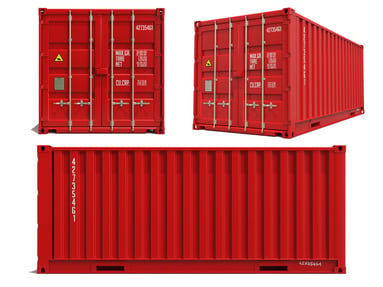
Not every commodity can be shipped in an intermodal container. Some commodities are strictly prohibited from rail shipping, while some are restricted.
Prohibited articles are not accepted by the railroads under any circumstances. Generally a commodity is prohibited because it is dangerous or could damage equipment. Those that are restricted can be moved via rail, but cannot be moved under FAK (Freight All Kinds) STCC codes. A STCC code is a seven digit numeric code representing 38 commodity groupings. Appropriate STCC codes must be used for these commodities, or large penalties may be assessed.
So, what are prohibited commodities and what are restricted commodities?
PROHIBITED:
Regardless of Equipment Owner:
- Items or substances considered as illegal contraband by any state or federal government entity, forbidden to be owned or possessed, or forbidden to be transported by any government entity when loaded on railroad owned, controlled, or leased equipment as well as private equipment
- Used batteries (electrical) spent, with or without chemicals
- Any material, cargo or products, defined in the Hazardous Materials Table as “toxic by inhalation” or “inhalation hazard”
- Flammable compressed gas when loaded in ISO Tank Containers or portable tanks
On Railroad Owned, Controlled, or Leased Equipment:
- Blacks - carbon gas, oil blacks, lamp blacks, vegetable blacks, dry NEC, not activated, no dyes or dyestuffs
- Bulk commodities
- Coal or coke, regardless of packaging
- Asbestos and hazardous waste or liquids
- Hides, furs, pelts or skins, green or green salted
- Municipal garbage waste, solid, digested and ground, fertilizer material or sewage waste
- Sodium compounds
- Used machinery, equipment, auto parts, assembled or in components
RESTRICTED:
- Aircraft or airplanes, their parts or components
- Animals – live, refrigerated, frozen, fresh meat, and packing house products
- Animals – trophies, stuffed or mounted, or research cadavers
- Bulk non-hazardous liquid in flexitanks/flexibags
- Calcium Carbide
- Ceramics
- Tobacco products
- Extraordinary value items such as bank bills, coins/currency, deeds, drafts, notes, valuable papers of any kind, carcasses, jewelry (other than costume or novelty), postage stamps, US Mail, precious metals or articles manufactured from precious stones, revenue stamps, antiques, collectibles, or any other old, rare, or precious articles
- Fish, shellfish, crustaceans – fresh or frozen
- Fruits or vegetables
- Hides, furs, pelts or skins, green or green salted.
- Ice cream, ice, frozen novelties
- Loaded temperature controlled trailers or containers
- Marine vessels, unless individually crated and properly blocked and braced
- Medical equipment, supplies, or hardware
- Pharmaceuticals, prescription and non-prescription medication
- Metal coils, rolls, reels, or spools when gross weight exceeds 3,500 lbs
- Military communications outfits
- Military tracking, radar, communications, electronics, or surveillance equipment
- Any items moving in conjunction with military field exercise
- Guided missiles, rockets, guidance systems or electronic guidance control for installation in missiles
- Motor vehicles of any kind, unless individually crated and properly blocked and braced
- Over dimensional shipments
- Plants, trees, flowers – living or fresh cut
- Raw wooden logs (in railroad equipment)
- Trailers, modular housing, prefabbed housing – units must ship empty
- Used business equipment, office furnishings
- Household goods and furnishings
- Used machinery, equipment, or auto parts
- Used tires
- Consumer electronics
- LTL shipment lot
- US Mail of any kind
- Packages or parcels
- Articles as defined in Bureau of Explosives Tariffs
- New auto parts or components
So there you have it - a comprehensive list of what cannot be moved via rail and what can be moved via special restrictions. For more information on intermodal, check out this post about what works and what doesn't work when shipping over the rails.

